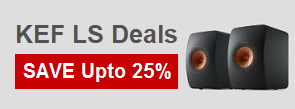Features
| Warranty length | 5 Years |
|---|---|
| Brand | Falcon |
Tech Specs
- Drive Units: 3-way vented
- Falcon Acoustics B139 ® 310mm x 210mm bass unit (made by and exclusive to Falcon Acoustics).
- Falcon Acoustics twin B110 ® midrange units (made by and exclusive to Falcon Acoustics).
- Custom 25mm ( 1”) soft dome tweeter with protection grille
- Freq. response: 20Hz-30kHz +/- 3 dB. 16Hz –5dB
- Impedance: 8 ohms
- Sensitivity: 87dB/2.83V/m
- Crossover: Hz 350 Hz, 3Khz
- Power handling: 50-250W
- Connectors: 4mm Custom-Designed nickel-plated binding posts
- Dimensions (HxWxD): 1203 x 270 x 460mm (+12mm for grille and binding posts) incl. 60mm Plinth & Premium Falcon Audio Engineering Stainless Steel Spikes.
- Finishes: Walnut, Rosewood sustainably grown real wood veneers.
- Weight: 47kg each, 100 kgs per pair shipping weight. 15 Kgs Plinth x 2
- Packing: 3 cartons, 2 x speakers in individual cartons, plus a separate carton for the plinth and Falcon spikes
Product Description
Falcon Acoustics M50 loudspeakers are the floorstanding model launched at the same time as the more compact M10 stand mount model. Falcon are renowned for their BBC studio monitors and these models were launched as the first of five new models that uses market leading crossovers and other components made by Falcon Acoustics.
Top Quality Cabinets
The Falcon Acoustics M50 is designed for larger rooms and has a bass port. Additionally, The beautifully built M range cabinets, are made in Italy, at the same factory where the Falcon Gold Badge LS3/5a cabinets are made.
The speakers are assembled in Oxfordshire, England. Cabinet finishes include walnut veneer or Rosewood as a special order.
Drive Units
The three way design uses the Falcon B139 bass unit with two Falcon B110 midrange units and a 25mm soft dome tweeter. The B110 bass unit is based on the original KEF design. These were used in the classic BBC monitor and have a Bextrene-cone.
Each pair is matched for frequency response using chamber test frequency response curves and test sequences. Additionally, The chassis is black powder coated. The surround, spider, magnets and metalwork are all made by the original manufacturers.
The B139 bass unit is 310mm x 210mm in size and is exclusive to Falcon acoustics. While the tweeter is a 25mm soft dome unit with a protection grill. The frequency response extends up to 30kHz. For stability the M50 features Audio Acoustics stainless steel spikes.
M50 crossovers
The crossover is used to control which parts of the audio spectrum is fed to each of the drive units. For example the crossover only passes high frequencies to the tweeters. Notably, exclusive Falcon acoustics transformer style inductors are used.
These have improved saturation and distortion characteristics. Additionally, specially developed capacitors feature graded polypropylene film for that signature sound and a long life. The handmade multilayer circuit boards are hand assembled in the U.K
Why Bass ports?
Bass ports are used to improve bass response. Loudspeakers using bass ports are know as Reflex or vented enclosure. A bass port is basically a tube that exits the speaker through a hole.
The speakers need careful placement to avoid boomy bass or not enough bass. The port also leads to less intermodulation and transient distortion than a sealed box. Another benefit is that the port also extends the low frequency response.
The Falcon Acoustics philosophy.
Falcon acoustics was founded in 1972 by KEF engineer Malcolm Jones. He designed the now legendary KEF drive units used by the reference Series 104 system. The company initially sold components to the DIY speaker market but soon developed the Self-bonded Ferrite Cored Inductors the company is famous for. These along with a range of capacitors used in crossovers led to a boom in home constructed speakers, in the 1970's.
Regarding the new M series current Falcon Acoustics MD said: “The ‘M’ range is designed with one objective in mind: to present a range of speakers appealing to those who desire the qualities of a traditionally voiced British speaker, which draw the musicians into the room and allow the listener to engage with music again.”
















































































